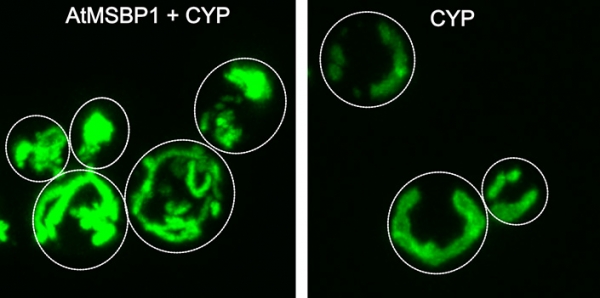A team of researchers led by the University of California San Diego has discovered a new way to make yeast cells more efficient “factories” for producing valuable plant compounds.
A team of researchers led by the University of California San Diego has discovered a new way to make yeast cells more efficient “factories” for producing valuable plant compounds. The advance could enable the sustainable manufacturing of plant-derived chemicals used to help plants defend against disease, repel pests, attract pollinators, and withstand environmental stresses such as drought and heat.
The new study focuses on improving the performance of plant enzymes known as cytochrome P450s — which play essential roles in the metabolic pathways that produce most of these compounds — in yeast cells. By studying a plant membrane protein called AtMSBP1, the team uncovered a mechanism that helps yeast cells better support plant cytochrome P450 enzymes. The findings could unlock the potential for more efficient and scalable production of valuable plant compounds.
Through the study of AtMSBP1, the researchers found that this plant scaffold protein helps yeast cells better coordinate activity and communication between different cellular compartments — not just the endoplasmic reticulum, but also the mitochondria and vacuoles. This unexpected cross-organelle coordination — including an expanded tubular ER network, increased mitochondrial volume and vacuole fission — creates a more dynamic environment that supports cytochrome P450 function, even in the absence of AtMSBP1 itself.
Read more at: University of California San Diego
3D confocal fluorescent images showcasing more supportive cell environments with enlarged mitochondria for enhanced cytochrome P450 activity due to co-expression of AtMSBP1 (left) compared to cells without the protein (right). (Photo Credit: Shanhui Xu)




